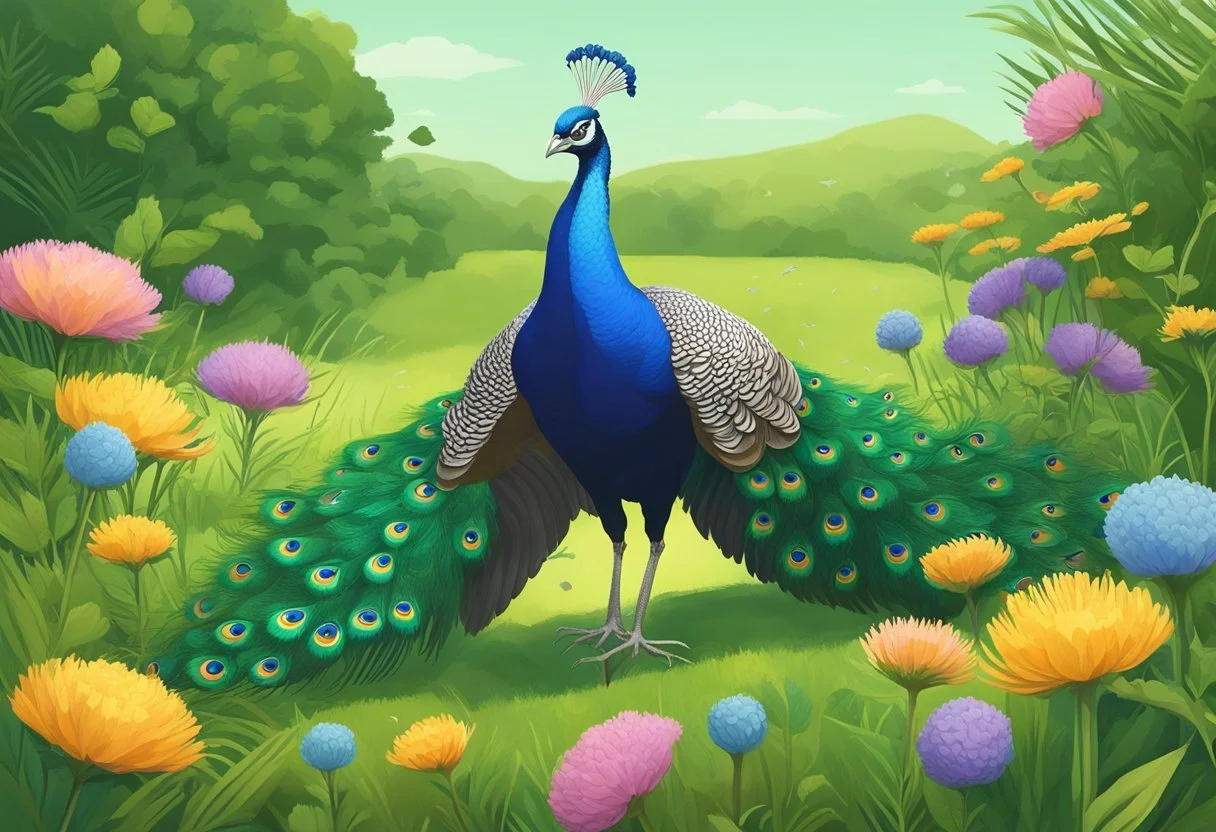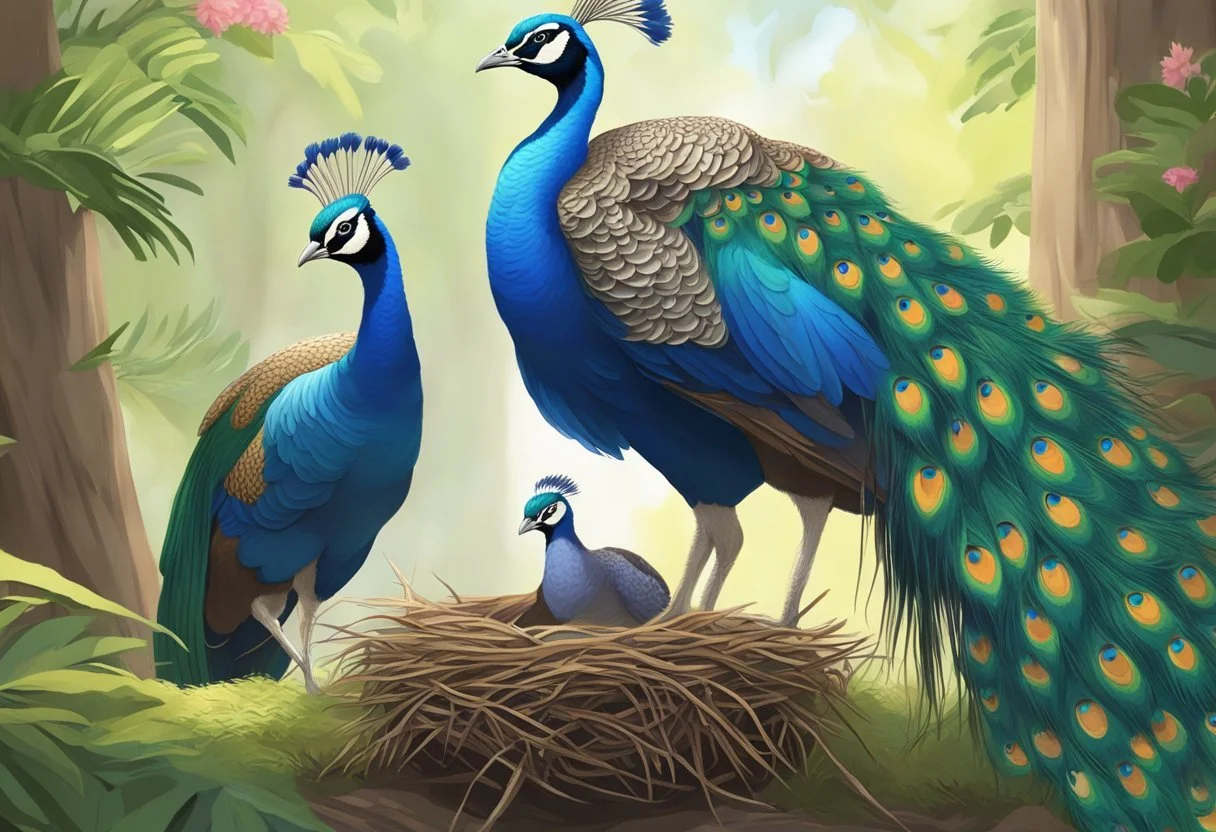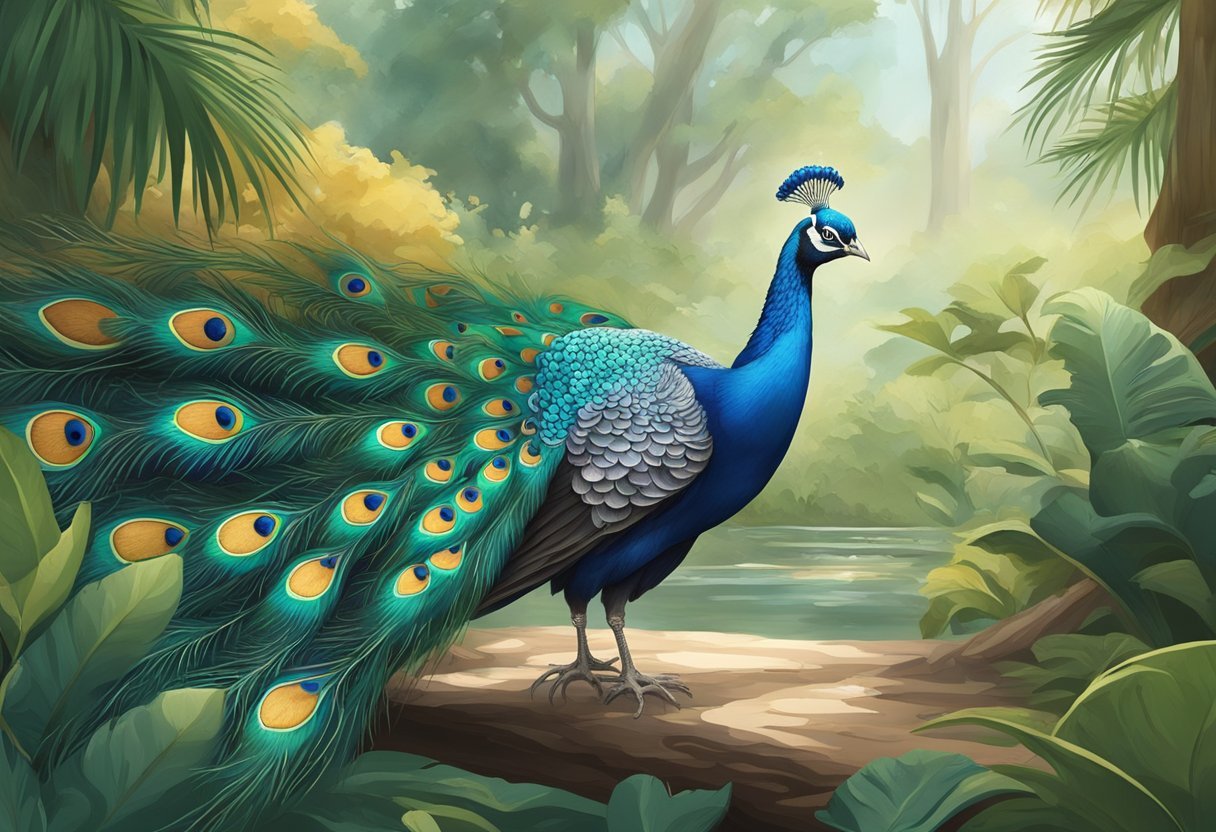Raising Peafowl
Essential Tips for a Thriving Flock
Raising peafowl can be a rewarding and fascinating endeavor for those who are interested in keeping these stunningly beautiful birds. These majestic creatures, known for their impressive plumage and regal bearing, have been admired for centuries for their ornamental value and unique characteristics. However, proper care and attention should be given when it comes to raising peafowl, as they have specific needs to ensure their overall health and well-being.
Before diving into the world of raising peafowl, it is essential to familiarize oneself with the various species and their specific requirements. The three species of peafowl are the India Blue, Green, and Congo Peafowl, with the India Blue being the most common and best suited for beginners. Regardless of the species, peafowl need plenty of space to roam, high-quality food, and a safe and comfortable shelter to protect them from the elements and predators.
When raising peafowl, a keen understanding of their unique behavior and temperament is crucial. These birds can be social and curious but also tend to be more sensitive than other types of poultry. A healthy environment, appropriate veterinary care, and a bit of patience can lead to a successful and satisfying experience for both the peafowl and their caretakers.
In this guide, we'll explore some essential tips to ensure your peafowl flock thrives. From navigating mating season to marveling at the stunning peacock feathers, caring for peafowl eggs, and enjoying the beauty of iridescent feathers, we've got you covered. Discover how to create a comfortable habitat for these backyard birds, especially in warm climates, and learn why cool water is essential for their well-being. We'll also touch upon the unique characteristics of White peacocks and how to care for your peafowl during cooler weather. Get ready to embark on a fascinating journey into the world of these magnificent bird species!
Housing and Environment
Coop and Pen Requirements
When raising peafowl, it is essential to create a comfortable and spacious living environment. Peafowl require a coop and a connected pen area for exercise, play, and foraging. The coop should provide at least 80 square feet of space per bird, while the pen should offer at least 100 square feet per bird.
It is crucial to include roosting perches inside the coop, preferably elevated, as peafowl like to roost high off the ground. A height of 4 to 6 feet is recommended. The coop should also have designated areas for nesting boxes, food, and water.
Area: Coop
Space per bird: 80 sq. ft.
Area: Pen
Space per bird: 100 sq. ft.
Area: Roost height
Space per bird: 4-6 ft.
Predator Prevention
To ensure the safety of your peafowl, take measures to protect them from possible predators. This includes installing secure fencing around the pen, burying the base of the fence at least 12 inches underground to deter digging animals, and covering the pen with wire mesh or netting to prevent aerial attacks.
Additionally, it is advisable to install a locking mechanism on the coop door, as raccoons and other intelligent predators can learn to unlatch simple latches.
Here is a list of predator prevention measures:
Secure fencing around the pen
Bury fence base 12 inches underground
Cover the pen with wire mesh or netting
Locking mechanism on the coop door
Optimal Conditions
Monitoring and maintaining the right environmental conditions is essential for the health and comfort of peafowl. The ideal temperature range for adult peafowl is between 40°F and 85°F. However, they can tolerate temperatures as low as 20°F with proper shelter and insulation during the winter months.
To create a comfortable environment, ensure the coop has proper ventilation for air circulation and temperature regulation while being draft-free. Additionally, keep the living spaces clean and dry to prevent disease, and provide plenty of shade in the pen area, especially during the hot summer months.
In summary, consider the following for optimal conditions:
Temperature range: 40°F - 85°F (with winter adjustments)
Proper ventilation in the coop
Draft-free environment
Clean and dry living spaces
Shade in the pen area
Nutrition and Feeding
Basic Dietary Needs
Peafowl require a balanced diet to maintain their health and vibrant plumage. This includes a mixture of protein, grains, vegetables, and fruits. A quality commercial peafowl feed designed specifically for their needs can help meet these requirements.
Protein: Aim for around 20-28% of total diet
Grains: Corn, wheat, rice, and barley (how long does barley last?) are suitable
Vegetables: Dark leafy greens, such as kale and spinach, are beneficial
Fruits: Offer fruits like apples and grapes in moderation
Ensure the peafowl have continuous access to clean, fresh water to maintain overall health and prevent dehydration.
Feeding Peachicks
Peachicks, or baby peafowl, require slightly different feeding guidelines compared to adults. They need more protein to support their growth and development. Offer a starter feed designed for peachicks, which usually contains about 28% protein.
Provide the feed in shallow dishes or trays, making sure it is easily accessible to the young birds. Gradually transition the peachicks to adult feed after they reach 3 months of age.
Besides starter feed, it is a good idea to supply peachicks with insects, such as crickets or mealworms, as an additional protein source. A few insects you can offer include:
Mealworms
Crickets
Small earthworms
Supplements and Grit
Adult peafowl can benefit from dietary supplements and grit to aid in digestion and maintain overall health.
Supplement their diet with calcium to support strong and healthy bones. This can be achieved by providing crushed oyster shells or a calcium supplement.
Introduce grit to a peafowl's diet to aid their digestive system. Peafowl have a muscular stomach called a gizzard, which uses grit to grind food into smaller particles for easier digestion. There are two main types of grit:
Insoluble (granite, flint)
Soluble (crushed oyster shell, limestone)
Offer grit in a separate container from the feed so the birds can consume it as needed. This will help maintain optimal digestive health.
Breeding and Reproduction
Breeding Season Preparation
To ensure a successful breeding season, it is crucial to provide peafowl with the necessary environment and diet. A few weeks before the breeding season, which typically begins in late March and lasts until August, increase the protein content of their diet to 20-25%. This can be achieved through the inclusion of high-protein feed, insects, or even small fish. Additionally, ensure they have access to clean water and a spacious habitat with both open and sheltered areas for mating and nesting.
During this period, the male peafowl, or peacock, will engage in a courtship display known as 'the display', fanning their spectacular tail feathers and emitting a series of calls to attract a mate. Providing plenty of perch spaces and visual barriers can encourage this behavior, improving the chances of a successful pairing.
Egg Laying and Incubation
Female peafowl, or peahens, typically begin laying eggs as early as April, after selecting a male partner. The table below lists the key characteristics and events during this period:
Event: Clutch size
Timeline: N/A
Details: 4-8 eggs
Event: Egg laying frequency
Timeline: N/A
Details: One egg every other day
Event: Incubation period
Timeline: 28 days
Details: Peahen incubates eggs; occasional male assistance possible
It is critical to maintain a clean, safe, and undisturbed nesting area for the peahen during this time. Providing ample bedding material, such as hay or straw, can enhance the comfort and success of the incubation process.
Raising Peachicks
Once hatched, peachicks require proper care and attention to ensure their healthy growth and development. Consider the following guidelines when raising peachicks:
Brooding: Peachicks should be housed in a brooder for the first 4-6 weeks, with a heat lamp maintaining a temperature of 95°F initially, and gradually decreasing by 5°F each week.
Diet: Feed the peachicks a high-protein starter feed (28-30% protein) for the first 4-6 weeks, before gradually transitioning to a lower protein grower feed, and eventually a breeder feed during adulthood.
Socialization: Peachicks are social animals; therefore, ensure they are raised with at least one other companion to prevent stress and potential health issues.
Following these guidelines will ensure the successful breeding, hatching, and raising of peafowl, contributing to the long-term health and well-being of these beautiful birds.
Health and Welfare
Common Health Issues
One of the most common health issues in peafowl is coccidiosis, a parasitic disease that affects the digestive system. Early detection and treatment are essential for a healthy bird. Symptoms to watch for include:
Diarrhea
Lethargy
Loss of appetite
Weight loss
In addition to coccidiosis, peafowl can also be prone to other diseases and infections. Some of these include:
Worm infestations: Regular deworming is essential for the well-being of your peafowl.
Respiratory infections: Keep an eye out for signs such as sneezing, coughing, and discharge from the eyes or nostrils, as these could indicate a respiratory infection.
External parasites: Lice, mites, and ticks can cause discomfort and spread disease. Regular inspections of your peafowl and appropriate pest control measures will help keep them at bay.
Foot problems: Cuts, abrasions, or overgrown nails can lead to discomfort and infection. Check your peafowl's feet routinely and take appropriate measures as needed.
Routine Care Practices
Maintaining a clean and healthy environment for your peafowl is crucial. Here are some routine care practices that will help ensure the health and welfare of your bird:
Proper nutrition: As omnivores, peafowl require a well-balanced diet that includes grains, fruits, vegetables, and animal protein sources. Providing good-quality game bird feed, as well as a variety of other foods, will help keep them healthy.
Clean environment: Keep their enclosure clean and free of waste to prevent the spread of bacteria and parasites. Ensure that their living area has good airflow and is protected from excessive heat, cold, and humidity.
Access to clean water: Provide your peafowl with fresh, clean water daily. Additionally, make sure large water dishes or pools are available for them to bathe in and keep those clean as well.
Inspect for health issues
Frequency: Weekly
Deworm peafowl
Frequency: Bi-monthly
Pest control measures
Frequency: As needed
Check feet and nails
Frequency: Monthly
By following these guidelines and keeping a close eye on your peafowl's health, you can ensure they remain happy, healthy, and thriving in your care.
Peafowl Varieties and Species
Color Patterns and Plumage
Peafowl are renowned for their stunning and diverse color patterns. There are three species of peafowl, each with its unique plumage:
Indian Blue: The most common species, with the trademark blue and green shimmering feathers on the neck and a majestic fan of elongated upper tail-covert feathers displaying an iridescent array of blue, green, and bronze eye-shaped patterns.
However, the rare and beautiful white peafowl is a sight to behold, especially when the white peacock extends its approximately 150 feathers. These peafowls are Indian Blue Peafowls (Pavo cristatus) with a genetic mutation known as leucism. Leucistic peafowl can produce pigment, but are unable to deposit it in their feathers, which leads to their blue-grey eye color and the absence of any coloration in their plumage.
Green Peafowl: This Southeast Asian species has distinct green and bronze body feathers, a fan-shaped crest on the head, and a brilliant scattering of blue, green, and gold eye-shaped patterns along the tail feathers.
Congo Peafowl: Native to the Congo Basin of Africa, this species has a more subdued plumage with no train. Males have a dark blue body with a white crest, red neck, and purple and green iridescence on the wing coverts, while females have a reddish-brown body with green and purple iridescence.
In addition to these natural colors, selective breeding has led to the emergence of several color variations within each species, such as white, pied, and black-shouldered forms.
Species-Specific Information
Below is a table summarizing some key differences and features among the three peafowl species:
Indian Blue
Range: South Asia, introduced elsewhere
Size: 7.5-9 ft
Plumage: Males: Blue and green iridescent neck, eye-patterned tail
Conservation Status: Least concern
Green
Range: Southeast Asia
Size: 7.5-10 ft
Plumage: Males: Green and bronze body, blue-green-gold tail
Conservation Status: Endangered
Congo
Range: Congo Basin in Africa
Size: 25-30 in
Plumage: Males: Dark blue body, white crest, red neck
Conservation Status: Vulnerable
Indian Blue peafowl thrive in a mix of forest, grassland, and cultivated areas, close to water sources. Their diet includes seeds, insects, small mammals, and reptiles. The males perform elaborate courtship displays, showcasing their stunning plumage to attract females. These birds also have significant spiritual and cultural significance in India and are the national bird of the country.
Green Peafowl inhabit open forests, grasslands, and wetlands in their native Southeast Asian range. They share a similar diet to the Indian Blue Peafowl. Green peafowl are more terrestrial than their Indian counterparts and are known for their loud calls during the breeding season. However, due to habitat loss and hunting, the green peafowl is listed as an endangered species.
Congo Peafowl are the most elusive of the three species, residing in the dense forests of the Congo basin. Their diet mainly consists of fruits and insects. The Congo peafowl is unique in that it doesn't have the lavish train found in the other two species, and the females lack the vibrant colors of the Indian and Green Peafowl. While their habitat is currently not heavily threatened, poaching has led to a decline in their numbers, thereby classifying them as a vulnerable species.






